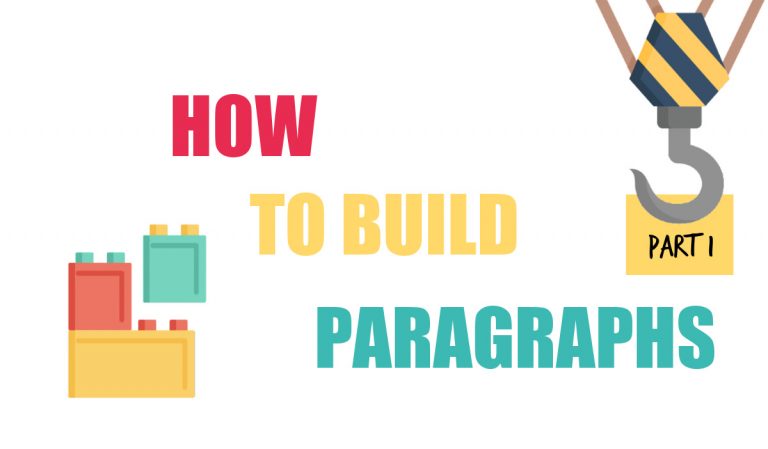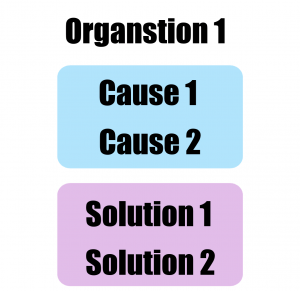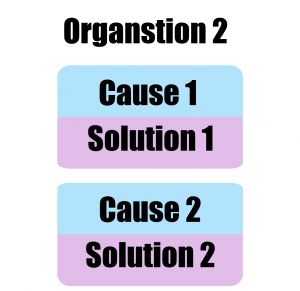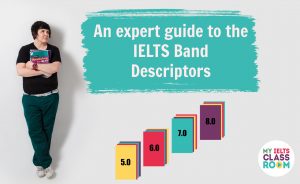
How to build an IELTS paragraph: Part 1
Being able to construct a paragraph is perhaps the most fundamental IELTS writing skill. If you are able to start with a clear topic sentence and then build a logical argument, you are almost guaranteed to receive a high score for Task Response and Coherence (and you have a good chance of a high one for Coherence and Cohesion too!) Today, Nick and I start with the basic question “What is a paragraph?” and end by showing you how being specific in your arguments can increase your score. However, there is a lot in between, including how to structure an IELTS paragraph that includes two ideas.
Below, you can find a summary of the episode, which includes all of the links to useful materials and the times of each part of the discussion (so you can go directly to the part you want to listen to) 🚀
- Subscribe to My IELTS Classroom podcast on Apple podcasts here
- Subscribe to My IELTS Classroom on Google podcasts here
- Become a Patreon to gain access to extra BONUS episodes here

What is an IELTS paragraph?
Let’s start with the absolute basics by answering the question: What is a paragraph? Very simply, it is a group of sentences that have one main theme that is discussed from beginning to end. In novels, you may see paragraphs that consist of one sentence, but in IELTS you want to have at least two for introductions and conclusions, and a minimum of four sentences for body paragraphs that discuss one idea, and five for both paragraphs that discuss two main ideas. Don’t worry about counting your sentences though in the exam. The examiner is not interested in how many sentences you write but the quality and clarity of your argument (as you will see below).
Can you have two ideas in one IELTS paragraph?
If a paragraph has one main theme, how is it possible that I can have two ideas in one paragraph? Good question! Well, that is because you are confusing “one idea” with “one theme”.
What we are looking for in an IELTS paragraph is unity.
Unity means that there is one overall clear theme or topic throughout the paragraph. For example, if your paragraph is about the advantages of living in an apartment, then I would expect you to discuss only the advantages. If you introduced a disadvantage, then the paragraph would lose unity as you would be changing themes. However, if you give two advantages in the paragraph, that would be absolutely fine as the overall theme would simply be “benefits”.
In some essays, it may be possible to structure your essay in two different ways by changing the theme of the paragraphs. For example, in a problem / solution essay, you may decide that to write about two causes of a problem in the first paragraph and two solutions in the second. In this case, the theme of BP1 would be “causes” and the theme of BP2 would be “solutions”.

An alternative, but equally as good, structure, would be to place one cause and its specific solution in BP1, and a second cause and its specific solution in BP2. Now, the theme would be the specific cause and its solution i.e. if you are discussing causes of crime, the theme of BP1 might be “poverty” and the theme of BP2 might be “lack of education”

In other words, it is absolutely fine to have one or two ideas as long as they are connected by one main theme. In fact, it is not the number of ideas in a paragraph that is important, but whether or not every sentence is connected to the main theme. How will you know that theme? You will look at the topic sentence.
The two types of topic sentences
If you have a paragraph that discusses two ideas, you will need a general topic sentence that covers both ideas. In my classroom, I call this type of topic sentence an “umbrella” topic sentence. In this case, you should just tell the examiner the broad theme of your paragraph without revealing any of your specific arguments. For example, for the cause / effect essay above, you may write:
Crime stems from two main causes.
You may think that this is short, but a sentence like this is vital in your essay as it tells the examiner how you have chosen to structure your essay and what will be contained in the paragraph. More importantly, this topic sentence covers both ideas in the paragraphs (i.e. the two causes). If we introduce a specific argument, then the topic sentence will only cover the first idea and not the second (so it will be a shock to the examiner when your second idea appears later!)
If you decided to choose the second type of organisation (i.e. where we have one cause and its solution in one paragraph), now you will need to write a specific topic sentence. This simply means telling the examiner what the specific theme of your paragraph is. This time you might write:
Poverty is the first main cause of crime.
Again, this is a short but effective sentence as it tells the examiner that this paragraph will discuss poverty, and only poverty. If you would like to read more about specific and general topic sentences, you can do so in this blog post.

Making sure you stick to the same theme throughout your IELTS paragraphs
If the first part of unity is making sure that your IELTS paragraph has one main theme, then the second part of unity is ensuring that every supporting sentence directly explains or proves your main idea. As we mentioned before, IELTS essays are short, so there is no time to go off-topic or at a tangent. If you do, this will seriously, compromise your score for Task Response (and coherence and cohesion).
For example, in a paragraph about the benefits of traveling to space, you can definitely mention the positive side effects we have from space technology, like the fact that mobile phones use satellites, but you don’t want to spend two sentences explaining how satellites work! That would be off-topic.
In order to know if your sentences are off-topic or on-topic, it is a good idea to either look back at the main topic sentence (if you have one idea in the paragraph) or to the sentence that presents an argument (if you have two ideas in the paragraph) to make sure you are on-topic). I find that students tend to start paragraphs strongly but then drift off-topic in the middle as they forget their initial argument.
Why don’t we have a short practice now? Here is a paragraph from an agree / disagree essay that is arguing that higher education should be free. Look at the paragraph and decide if it has unity i.e. decide if every sentence in the paragraph is connected to the main idea in the topic sentence.
First and foremost, it is important to remember that educated students are an investment for the future of any nation. An inability to pursue higher education due to financial constraints results in lack of resources in important fields like science, management, and law and enforcement. Many students choose to work at fast-food chains to afford their education, but often fail to do so over the entire span of their university education as they require time to study as well. Consequently, high school graduates have no choice but to take up jobs they are over-qualified for, as they tend to be under-qualified for others. The younger generation may suffer dissatisfaction and mental health issues owing to unemployment and financial instability. Allowing students of all financial backgrounds a chance for university education, contributes not only to the welfare of the younger generation, but also largely benefits the nation.
Well, what do you think? Does this paragraph have unity? Is every sentence connected to the main idea given to us in the topic sentence?
The answer is a simply no.
Despite a strong start, the student moves from the topic of “investment for the future of any nation” after the second sentence, and does not return until the final one, but by then it is too late! In the middle, a second different argument is introduced i.e. that students are not able to work and study at the same time. I think that it is a relevant idea, but it does not belong in this paragraph as it has nothing to do with “the future of a nation”
First and foremost, it is important to remember that educated students are an investment for the future of any nation. An inability to pursue higher education due to financial constraints results in a lack of employees in important fields like science, management, and law and enforcement. Many students choose to work at fast-food chains to afford their education, but often fail to do so over the entire span of their university education as they require time to study as well. Consequently, high school graduates have no choice but to take up jobs they are over-qualified for, as they tend to be under-qualified for others. The younger generation may suffer dissatisfaction and mental health issues owing to unemployment and financial instability. Allowing students from all financial backgrounds the chance of a university education, contributes not only to the welfare of the younger generation, but also largely benefits the nation.
In order for this paragraph to have unity, we will have to change the middle two sentences so that they directly explain or prove the main idea. Let me have a go.
First and foremost, it is important to remember that educated students are an investment for the future of any nation. An inability to pursue higher education due to financial constraints results in a lack of employees in important fields like science, management, and law and enforcement as those from low-income families simply cannot afford the fees. More importantly, even if there are enough graduates to fill those positions, there is no guarantee that they are the best candidates for the job as a paid system is based on finances rather than talent. Giving students from all financial backgrounds the chance of university education will mean that places are won on merit and, in turn, that jobs are filled by those who are best qualified for them. This benefits the nation as a whole because the more qualified the workforce, the more developed the society.
Want to know how the examiner will apply the band descriptors when marking your IELTS essay?
Then download a copy of our FREE e-book, which explains how each of the four marking criteria is applied and includes the most common errors made by test-takers. Just click here for your copy.

Developing an IELTS paragraph that contains two ideas
For the rest of the episode, Nick and I will discuss how you can build arguments in IELTS paragraphs that contain two ideas. This is easier than building paragraphs with one idea as you do not have to develop your idea over several sentences. However, there are still places where students can go wrong, and simple tricks that you can use to improve your score. Let’s start with the basic problem areas.
Problem 1 – Having a specific topic sentence
As we discussed earlier, if you are writing a paragraph with two ideas, you will need an umbrella topic sentence that covers both. That means you should not present either of your ideas in the topic sentence, but instead simply explain what the main theme of the paragraphs will be. Here are some simple examples of what general topic sentences look like:
- On the one hand, there are a number of advantages to working from home (i.e. this is a paragraph about the advantages)
- On the one hand, it could be argued that children should learn to read from books. (i.e. this is a paragraph for the first view that was given in the question)
- There are two main reasons for the increase in stress. (i.e. this is a paragraph about the causes of stress)
Problem 2 – Not expanding your argument enough
If you do have more than one idea, make sure that they are both extended. One common error is having a second idea that is stuck at the end of the paragraph and is not developed. 99% of the time, this means that the second idea is given in just one sentence. The simple way to avoid this problem is to make sure that you have at least two sentences for each idea. If you look back at your paragraph and you only have one sentence for an idea, you have two choices.
If your sentence is short, you can add a second sentence to explain the idea in more detail.
On the one hand, it could be argued that it’s important for children to spend time alone. First, this can help them to become independent and self-sufficient in whichever work they do. For instance, developing habits such as reading books and painting not only increases knowledge but also helps to improve levels of concentration. In addition, some also argue that children who learn how to keep themselves busy also develop the skill of creative thinking.
On the one hand, it could be argued that it’s important for children to spend time alone. First, this can help them to become independent and x self-sufficient in whichever work they do. For instance, developing habits such as reading books and painting not only increases knowledge but also helps to improve levels of concentration. In addition, some also argue that children who learn how to keep themselves busy also develop the skill of creative thinking. As a result, they become better at problem solving, which can have benefits for both academic and personal development.
Alternatively, if your sentence is very long, you can split it up to make two shorter sentences.
On the one hand, paying a visit to areas like the Sahara desert or Antarctic can be dangerous. These areas may be occupied by wild animals and this could cause real problems for tourists because these animals may not be used to strangers visiting and can result in visitors being attacked by these animals causing injuries or worse even death. = ONE LONG SENTENCE
On the one hand, paying a visit to areas like the Sahara desert or Antarctic can be dangerous. These areas may be occupied by wild animals and this could cause real problems for tourists because these animals may not be used to strangers. This can result in visitors being attacked by these animals causing injuries or worse even death.= TWO SHORTER SENTENCES
If you are looking for the highest level of support and guidance in your IELTS journey, then why not find out about our award-wining Gold Package by clicking here.

Problem 3 – Not having an explanation sentence
If you are writing a paragraph that has two ideas, you will probably only have a maximum of 3 or maybe 4 sentences to present and develop your idea. However, it is vital that you do not skip the sentence that explains your sentence in detail. Look at this paragraph for example:
-
However, there are two ways that the problem of lack of respect to the older generation can be addressed. First, teachers and parents can show children the value of older members of the community from an early age, so children will be brought up in the environment where older people are cherished. This would encourage young individuals to be polite and showrespect to those who are older.
The writer has given us two sentences for this first idea, which as we have just discussed is the minimum that we need. However, they have jumped straight from giving us an argument (children should learn the value of older members of the community) to the result (this will help them show respect) without explaining exactly HOW young people can be taught to value their elders!
In the lesson with this student, I joked that it is the same as saying “all homeless people should be given a home to reduce homelessness”. Obviously this will solve the problem, but it is a meaningless argument if you cannot tell me HOW they will be given a home! In the same way, this argument requires an extra explanatory sentence to explain how children will learn this message:
However, there are two ways that the problem of lack of respect to the older generation can be addressed. First, teachers and parents can show the value of older members of the community from an early age. If children are taught modern history at school or encouraged to find out more about the lives of their grandparents at home, they will start to connect with them more. This would encourage young individuals to be polite and show respect to those who are older.
Remember, it is not the examiner’s job to fill in the gaps in your argument. If they are asking “why” or “how”, then your score will be reduced.
Problem 5 – Being repetitious in your argument
As we have said, IELTS essays are short and you do not have much space to make a high-quality argument. This means that every word in your IELTS paragraph should count. As an examiner, I am looking for arguments that are clear and concise. More importantly, I do not want to see repetition, particularly in “result” sentences.
Let’s look again at the paragraph. The student ends the idea with a sentence that gives the result of the recommended action. However, is it really maximising the student’s chance of receiving a high score? I don’t think it is. Sadly, nothing NEW is given in the final sentence. It is just more or less a repeat of the topic sentence.
However, there are two ways that the problem of lack of respect to the older generation can be addressed. First, teachers and parents can show the value of older members of the community from an early age. If children are taught modern history at school or encouraged to find out more about the lives of their grandparents at home, they will start to connect with them more. This would encourage young individuals to be polite and show respect to those who are older.
A much more powerful way to end this paragraph would be to give a specific example of HOW young individuals may show politeness if they are taught more about the role of old people in society.
However, there are two ways that the problem of lack of respect to the older generation can be addressed. First, teachers and parents can show children the value of older members of the community from an early age. If children are taught modern history at school or encouraged to find out more about the lives of their grandparents at home, they will start to connect with them more. Seeing older people in a new light may encourage the young to be more respectful of their elders by being patient when they are slow or being willing to help them in the home.
Can you see the difference? By specifying exactly HOW young people can show respect, I have not only made my argument more concrete, which will increase my score for TR, but I have also shown the examiner a new range of vocabulary, which will also increase my score for LR.
Problem 5 – Not being specific enough in your argument
Students often tell me that they find it hard to come up with good ideas for essays. However, what I have noticed is that there is nothing really wrong with the students’ ideas, it is just that they are arguing them in a way that is too simplistic.
I think that the easiest way to improve the quality of your arguments is to simply be more specific.
Take the following argument as an example. The idea is good (people bring work home), but the way that it has been developed is very simplistic in terms of argument and language.
The increase in stress stems from two main causes. First, people tend to sleep fewer hours these days because they work at home after a long day at work. Consequently, many feel tired and exhausted, which means that the level of stress is rising.
Now look how we can take the same idea but develop it in a much more sophisticated way by simply being more specific.
The increase in stress stems from two main causes. First, people tend to sleep fewer hours these days as many have to bring work home with them, which can leave them feeling exhausted. Working in the evening as well as the day means that workers are not only unable to switch off and recuperate, but they are also not able to spend quality time with friends and family. This has a knock on effect on personal relationships, which can become strained if partners or children feel neglected, and compounds the stress caused by tiredness further.
I hope that you have found this lesson useful. Next week, we shall turn to how you can develop paragraphs that contain one idea. Although some of the principles are the same (i.e. having unity, making sure you explain, being specific, etc), new problems arise when you have to develop one idea across 4 or 5 sentences. So, make sure you come back to learn more fundamental IELTS skills then!
